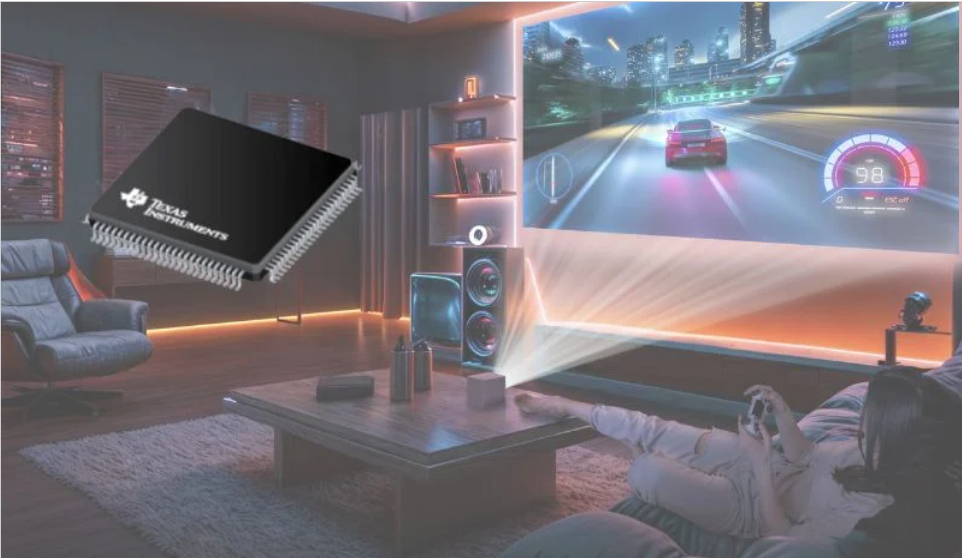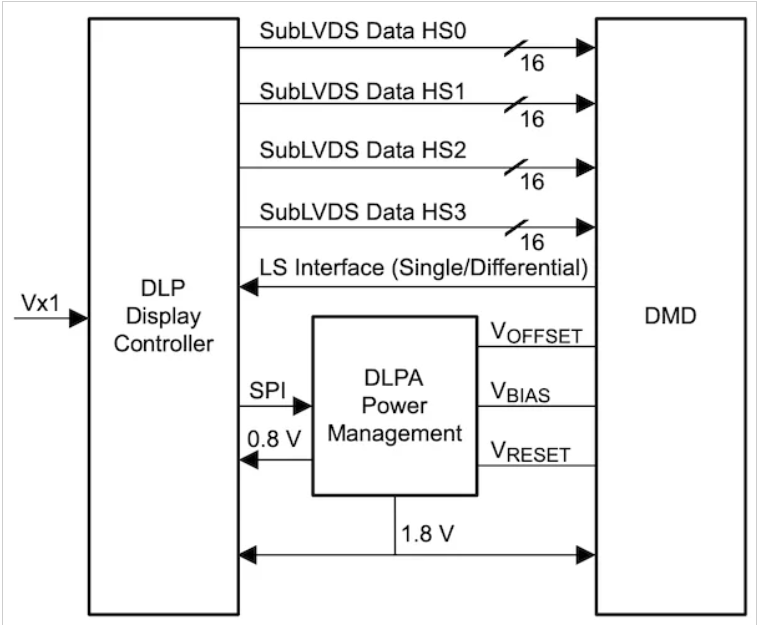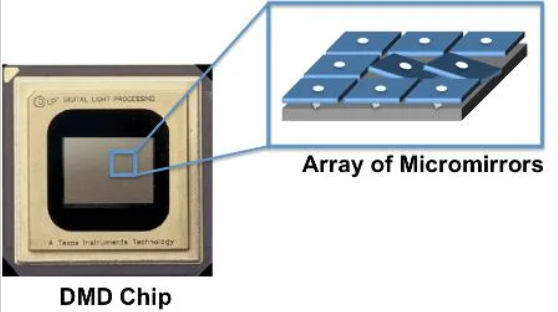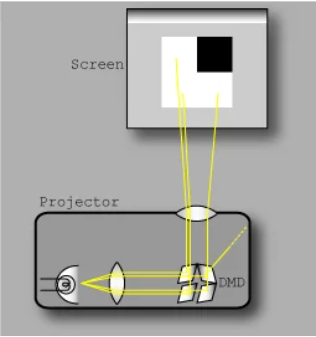At the width of a pencil eraser, the new digital light processing chipset may enable the "smallest, fastest, and lowest-power 4K ultra-high-definition (UHD) projectors ever".
Today Texas Instruments introduced a digital light processing (DLP) chipset that is 90% smaller than previous generations. The 9 mm x 9 mm DLPC8445 chip is a highly advanced digital display controller that addresses the demand for high-resolution displays, like 4K UHD displays, that provide unprecedented image clarity and color fidelity.

The DLPC8445. Image (modified) used courtesy of Texas Instruments
A Compact DLP Controller for Sharp Displays
The chip’s internal architecture (datasheet linked) is powered by an Arm processor and features 52 configurable GPIOs, a PWM generator, capture and delay timers, and a USB 2.0 high-speed controller. It also includes a sophisticated warping engine that supports 1D, 2D, and 3D keystone correction, multipoint manual warping, and full-warp map access with 32 x 18 uniformly sampled points.

4K UHD display chipset. Image used courtesy of Texas Instruments
It features several video processing features, such as DynamicBlack and HDR10 support (both PQ and HLG), frame rate multiplication, color coordinate adjustment, white color temperature adjustment, programmable digamma, and read-side, spatial-temporal multiplexing. It also integrates support for 3D displays and provides a rolling buffer to minimize frame latency.
The input to this chip is a single V-by-One HS video port that can support one to eight lanes, with a pixel clock of up to 600 MHz and a transmission rate of up to 3.0 Gbps per input. TI designed the DLPC8445 to work in tandem with the DLP472TP digital micromirror device (DMD) and DLPA3085 PMIC/LED driver. Together with the DMD and PMIC, this chipset can deliver up to 4K UHD resolution at 60 Hz and 1080 p resolution at 240 Hz for 2D content and 120 Hz for 3D content.
How DLP and DMD Work Together
In advanced display systems, DLP controllers and DMDs work in tandem to create high-quality, precise digital displays. In Texas Instruments’ solutions, the DLP uses DMDs as the core component to modulate light and generate images.

A DMD chip consists of an array of micromirrors. Image used courtesy of ProjectorScreen.com
At the heart of a DLP system, the DMD consists of an array of tiny mirrors, each representing a single pixel in the projected image. These mirrors are mounted on tiny hinges that allow them to tilt toward or away from a light source, usually a high-intensity lamp or LED. Each mirror can tilt thousands of times per second, directing light either toward the projection lens or away from it, thereby creating bright and dark pixels on the screen.
The process begins with the DLP controller, which sends binary data corresponding to the image to the DMD. The controller rapidly processes this data, converting it into signals that dictate the tilt position of each micromirror. When a mirror tilts towards the light source, it reflects light through the projection lens onto the display surface, creating a visible pixel. Conversely, when it tilts away, the light is directed into a light-absorbing area, rendering the pixel dark.

Diagram of a DMD producing an image. Image used courtesy of ProjectorScreen.com
To produce color images, DLP systems typically use a color wheel that spins between the light source and the DMD. This wheel is divided into segments of primary colors (red, green, and blue). As the wheel spins, it sequentially filters the light into these colors, and the DMD mirrors adjust their tilt to reflect the appropriate color combination for each pixel. By synchronizing the color wheel's rotation with the micromirrors' tilt, the DLP system can produce full-color images at high resolutions and refresh rates.
Big-Screen Projections Anywhere
With a 90% reduction in DLP size, TI's DLPC8445 may unlock big-screen gaming and projection anywhere. The company claims that future versions of the family will be fit for more demanding applications like augmented reality glasses. Preproduction quantities of the new chipset are now available.















